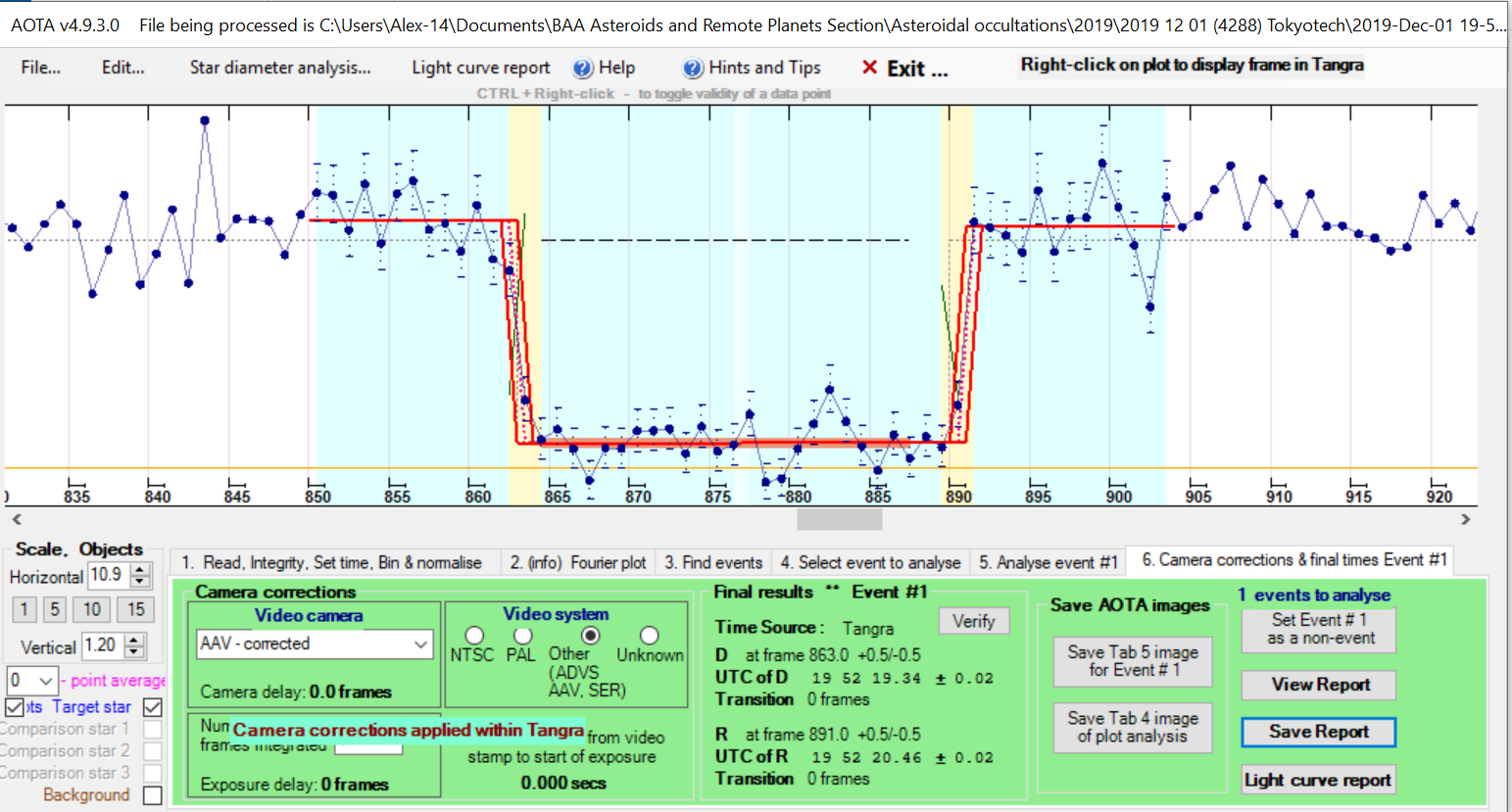Observation by Alex Pratt: (4288) Tokyotech occults TYC 1219-00564-...
Uploaded by
Alex Pratt
Observer
Alex Pratt
Observed
2019 Dec 01 - 19:52
Uploaded
2019 Dec 18 - 21:57
Objects
Conjunction
Equipment
- C11 f/10 and f/3.3 focal reducer
- Watec 910 video camera
- IOTA-VTI GPS time inserter
- OccuRec (recording)
- Tangra and AOTA (reduction)
Exposure
0.04s
Location
Z92
Target name
(4288) Tokyotech occults TYC 1219-00564-1
Title
(4288) Tokyotech occults TYC 1219-00564-1
About this image
The mag 14.7 main-belt asteroid (4288) Tokyotech, 12 km in diameter, was predicted to occult a mag 11.2 star in Aries on 2019 December 1. Observers within the 12 km wide shadow track could see a drop in brightness of 3.5 magnitudes for up to 1.4s.
My site was 10 km south of the predicted shadow zone, with an 11% probability of success. I was fortunate to record the brief disappearance of the target star, 1.12s in duration. The attached screenshot shows the analysis of the light curve using Tangra and AOTA.
D - 19 52 19.34 ± 0.02
R - 19 52 20.46 ± 0.02
This is the first chord observed across Tokyotech; there are no previous observations listed in the Occult database. These timings confirm that the asteroid is at least 9 km in diameter and the Gaia position of the target star will give high-precision astrometry of the asteroid at the mid-time of the occultation.
After I submitted my formal report to the Planoccult list server I received an interesting reply from Raoul Behrend (Geneva Observatory). He leads the CdR &CdL team which analyses asteroids' light curves, searching for binary systems. He commented that Tokyotech is a binary asteroid, and two hours before my occultation event its components were predicted to be in mutual eclipse. Because I recorded one brightness dip and not two, this would help to constrain their model of the Tokyotech system.
Files associated with this observation
Like this image
Jeremy Shears,
Philip Denyer,
Graham Winstanley,
Mr Leonard Entwisle,
Dr Paul Leyland,
David Basey,
Ray Emery,
Peter Carson,
Nick Hewitt,
Andy Wilson,
Tom Moran,
Andrew Dumbleton
Comments
Alex - another superb observation! Well done that man (again)!
Many thanks, 'Ragnar'.
We're hoping that the Gaia Data Release 3 in 2020-2021 will give us high quality asteroid orbital elements, leading to much-improved occultation predictions, removing a lot of the uncertainties in this work.
Clear skies,
Alex.
Copyright of all images and other observations submitted to the BAA remains with the owner of the work.
Reproduction of work by third parties is expressly forbidden without the consent of the copyright
holder. By submitting images to this online gallery, you grant the BAA permission to reproduce them in
any
of our publications.


